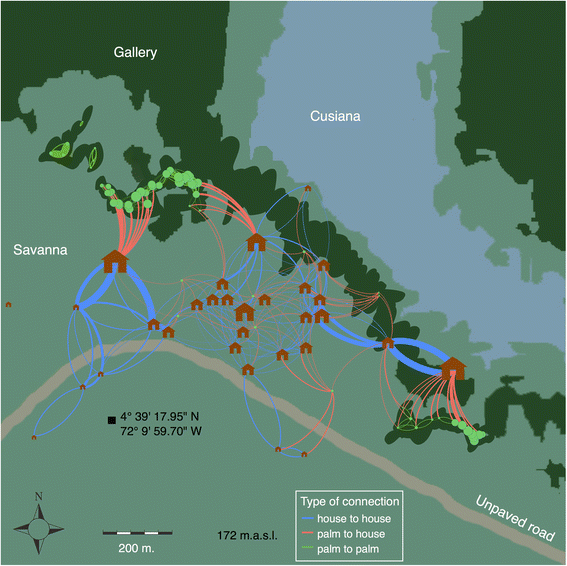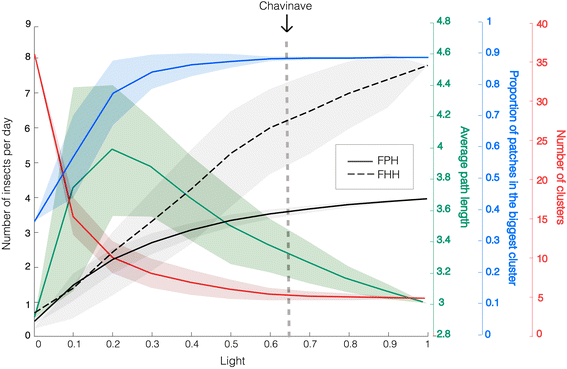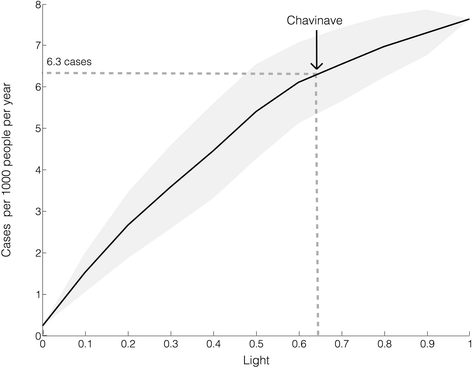The role of light in Chagas disease infection risk in Colombia
- PMID: 26732186
- PMCID: PMC4700647
- DOI: 10.1186/s13071-015-1240-4
The role of light in Chagas disease infection risk in Colombia
Abstract
Background: Chagas disease is the most important vector-borne disease in Latin America and Rhodnius prolixus is the main vector in Colombia. Control strategies in this region have shown poor outcomes due to the insect's ability to disperse between the sylvatic and the domestic habitat. Because insect migration to houses is responsible to sustain contact rates between vectors and humans, understanding the risk factors that promote migration could be important in designing control strategies. In this respect, it has been reported that adult triatomines have the ability to move over long ranges at night attracted by artificial light. Thus, light bulbs could be playing a critical role in house invasion. The main objective of this study is to understand the role of artificial light, or simply light, in house infestation by R. prolixus.
Methods: To investigate the role of light, we combined fieldwork in the village of Chavinave, Casanare, Colombia and a mathematical model of Rhodnius prolixus dynamics. The model allowed us to simulate insect mobility and distribution in the village based on field results. We created 11 scenarios representing different amounts of light in the village (from 0 to 100%, with increments of 10%) with 100 simulations each for a time of 1000 days (2.7 years) and compare the results between the scenarios.
Results: None of the Gomez-Nuñez traps were positive at any stage of the study, suggesting that insects do not colonize houses. The model predicts that with current village connections the proportion of houses that have visiting insects should be around 98%. Additionally we showed that an increase in light allows for insect spreading and migration to previously un-infested areas.
Conclusions: Increments in light could increase the contact rates between vectors and humans; a two-fold increase in human cases for a 30% increase in the use and visibility of light on this particular village was estimated with the model.
Figures




References
-
- PAHO/WHO . Small Bites, Big Threats (Chagas Disease). World Health Day (April, 7) 2014.
-
- Moncayo A, Silveira AC. Current epidemiological trends for Chagas disease in Latin America and future challenges in epidemiology, surveillance and health policy. Mem Inst Oswaldo Cruz. 2009;104(Suppl):17–30. - PubMed
-
- Guhl F, Lazdins-Helds J. Reporte sobre la enfermedad de Chagas. Grupo de trabajo científico. Geneva: World Health Organization; 2007. pp. 1–96.
-
- Guhl F. Estado actual del control de la enfermedad de chagas en colombia. Medicina (B Aires) 1999;59(Supl I):103–116. - PubMed
Publication types
MeSH terms
LinkOut - more resources
Full Text Sources
Other Literature Sources
Medical

